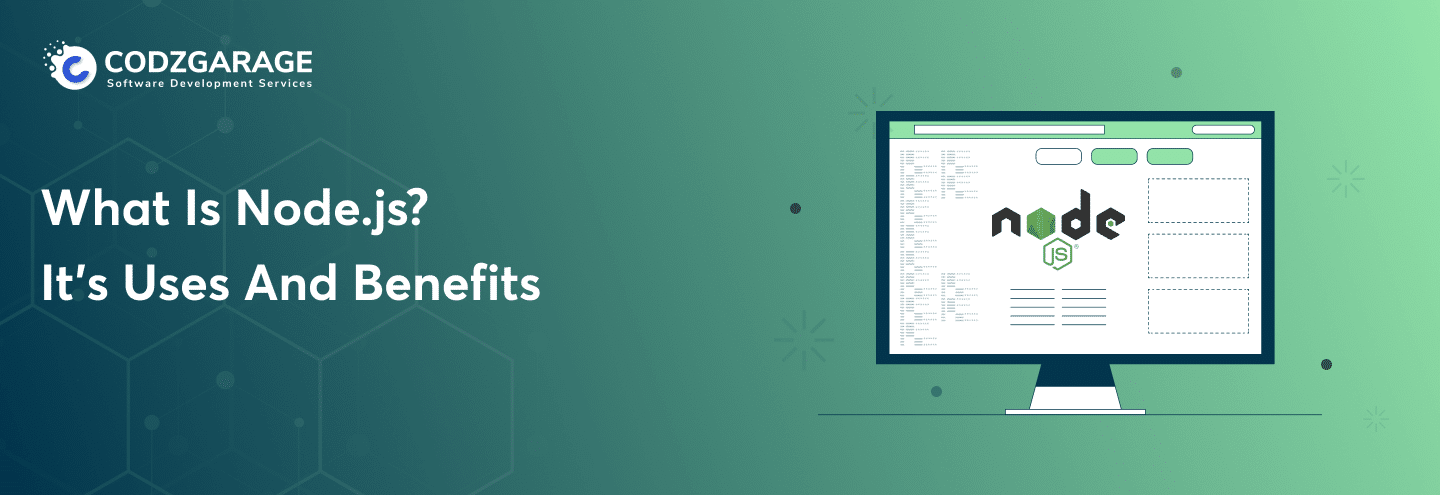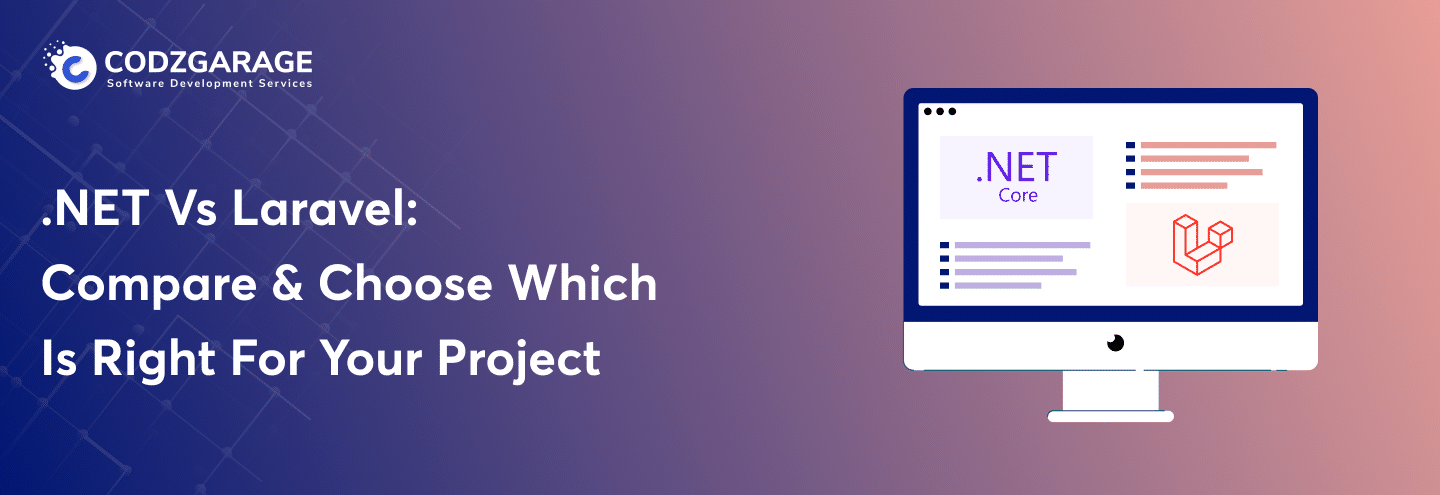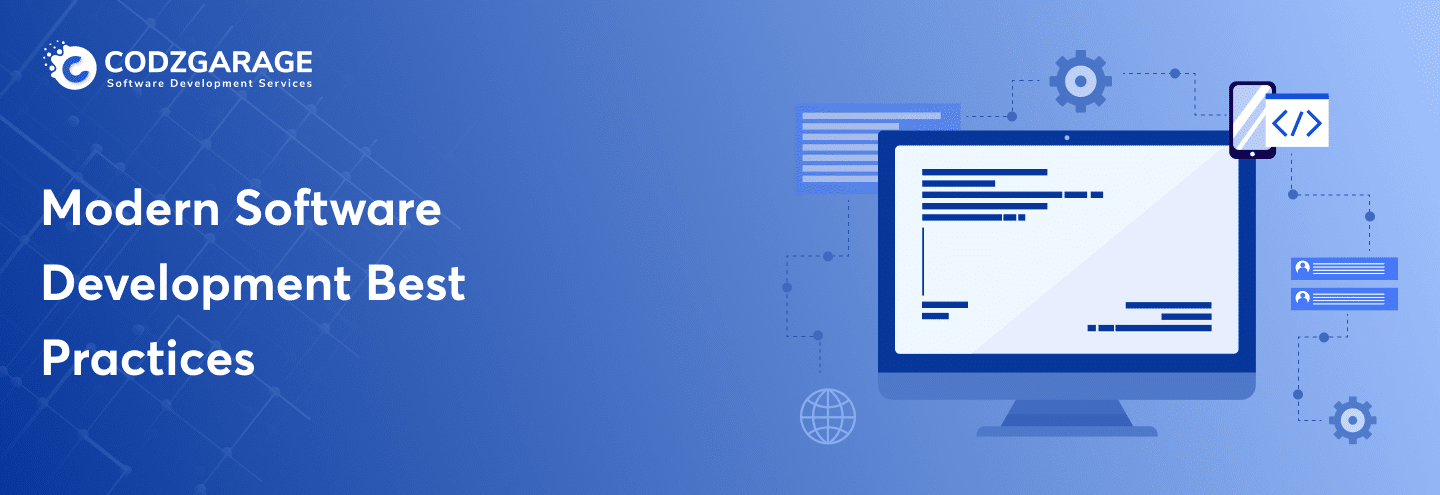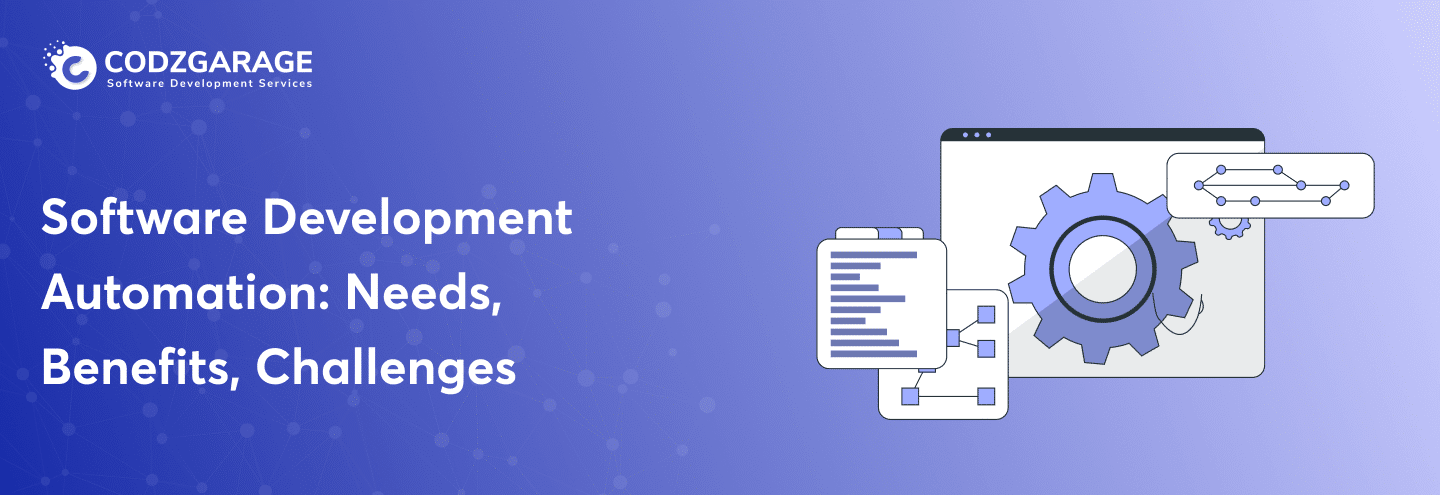-
2355
Top 12 Emerging Healthcare App Development Trends Technologies for 2024
Technology is a boon for the healthcare sector as it received a revolutionary impact in the last couple of decades. But the perks of tech advent are for those who keep track of healthcare app development trends. The year 2024 is going to be very crucial, and those who understand technology trends of healthcare in 2024 will reign in the sector.
Technology has completely revolutionized the healthcare industry. We have come a long way from stethoscopes and manila folders. With advanced healthcare app development trends 2024 and technology, doctors and medical professionals can store & access crucial information and effectively diagnose ailments while administering top-notch, timely, and affordable treatment.
Technology played a pivotal role in saving lives during the Covid-19 outbreak in 2020 and the succeeding year. Moreover, the adversity-induced healthcare innovations and technology trends in 2024 may bring about unimaginable medical breakthroughs in the future.
Healthcare revenue is expected to grow at an annual rate of 10.15%, leading to an estimated market volume of US$94.07 billion by 2027. As a result, hospitals and other institutions must manage an enormous number of patients.
At the same time, they must minimize errors, ensure patient privacy, and adapt to an ever-changing regulatory environment. Is it possible to accomplish these goals without healthcare technology?
Codzgarage is a proven software development company offering reliable and cost-effective web and mobile app development servicesfor a wide range of industry verticals. Let’s connect with us with your project scope and we will help you trun your scope into reality.
Advanced healthcare technologies like nanotechnology, remote clinical services, health wearables, etc., can boost sales, staff productivity, and profitability, resulting in enhanced patient experience. As we already discussed app development trends for mobile, this blog will discuss emerging healthcare technology trends in 2024 that can help you transform your medical facility and exceed people’s expectations. Keep reading.
1. CRM in Healthcare
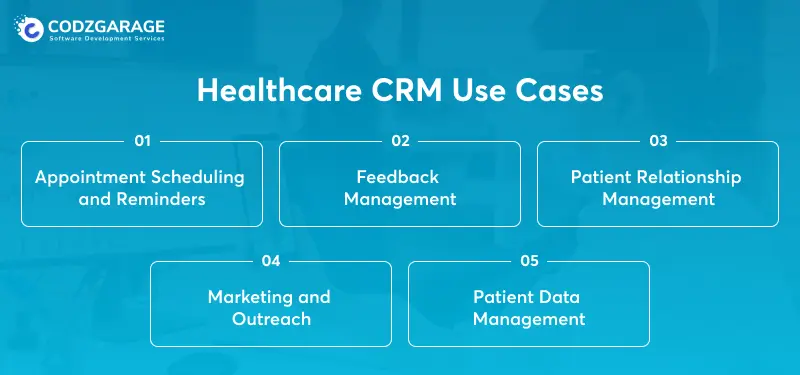
Customer Relationship Management (CRM) is a strategy and approach to managing interactions and relationships with customers or clients. In the healthcare industry, CRM can be used to improve patient engagement, satisfaction, and loyalty by providing personalized and timely communication and services.
Here are some ways that CRM can be used in healthcare:
- Patient Relationship Management: CRM can help healthcare providers to manage relationships with patients by tracking their preferences, needs, and health status. This can enable providers to provide personalized care that meets the specific needs of each patient.
- Patient Data Management: CRM can help healthcare providers to manage patient data, including medical records, appointments, and billing information. This can improve the accuracy and efficiency of patient care and reduce errors.
- Appointment Scheduling and Reminders: CRM can be used to schedule patient appointments and send reminders to patients about upcoming appointments. This can reduce no-shows and improve patient satisfaction.
- Feedback Management: CRM can be used to gather feedback from patients about their experience with healthcare providers. This can help providers to identify areas for improvement and provide better care.
- Marketing and Outreach: CRM can be used to market healthcare services and reach out to potential patients. This can increase awareness of healthcare services and improve patient acquisition.
CRM is crucial Healthcare App Development Trends and can be a valuable tool for healthcare providers to improve patient engagement, satisfaction, and loyalty. By providing personalized and timely communication and services, healthcare providers can build stronger relationships with patients and improve the quality of care they provide.
2. Hackers Threat Posing Risks for Healthcare Sector

With great technology comes great responsibility. AI can alleviate healthcare services and save millions of lives, but it comes with a downside. Hackers can use AI and take advantage of vulnerabilities in online systems to corrupt or steal sensitive information.
Like healthcare institutions, unethical hackers will also have access to AI and can use it to develop malware and phishing schemes. Hackers account for 47% of healthcare data breaches. Another report stated that healthcare organizations had lost over $25 billion in the past two years due to cyber threats.
In addition to information leaks, ransomware and other menaces can lead to sluggish operations, delays in medical procedures, more extended hospital stays, and compromised systems. Moreover, other devices connected to computers, IoT systems, and hospital WiFi are at risk of being infected due to these attacks.
With the advent of AI software that can mimic the human appearance and vocal cords, patients, insurance companies, and other parties can suffer enormous damage. What is the solution? Hospitals and app/device developers must implement proper protocols to thwart hacking attempts.
Moreover, some AI researchers have developed tools to identify and stop hacker threats before they cause irreparable damage. Healthcare establishments must consider these options and invest accordingly.
3. Big Data and Analytics Integration

Hospitals and other healthcare institutions have gigantic amounts of data. This data consists of patient records, administrative and demographic information, prescription drugs, laboratory tests, diagnostics, physiologic monitoring data, and much more. First, it is impossible to maintain these records’ physical documents because they may deteriorate over time. Secondly, shuffling through piles of documents when you need them is a good feeling.
Disposing of such information quickly is not an option. With Big Data Analytics, healthcare staff can store vast quantities of data in digitized forms while analyzing and consolidating them. We should not forget that diseases are also evolving as we speak. Doctors and experts can use healthcare KPIs and data analytics to identify symptoms quickly and administer the proper treatment.
Treatment of an ailment in the initial stages will ensure minimal patient discomfort while reducing expenses. Furthermore, patients with chronic/multiple illnesses have records in hospitals, clinics, and other locations. Consolidating data from all these locations can help doctors understand the problem, communicate effectively, and administer appropriate treatment
In 2024, big healthcare institutions are looking to invest in secure, multi-cloud solutions that can integrate information silos with existing systems while sharing, moving, managing, storing, and mining them for future purposes. The value of data in the healthcare industry could reach $79.23 billion by 2028.
4. IoMT —The Next Healthcare App Development Trends

IoMT (Internet of Medical Things) is an intricate maze of medical devices, software, healthcare systems, and services that enable the sharing of real-time information through networking technologies. As per a study, the global IoT medical services market is expected to reach USD 94.2 billion by 2026 from $25.6 billion in 2021 at a CAGR of 24.6% during the forecast period.
Wearables, trackers, pulsometers, and heart rate monitors are examples of IoMT. When attached to patients’ bodies, these devices transmit vital information to doctors and medical staff, who use them to diagnose, monitor and treat patients effectively.
Trackers and other devices enable patients and regular people to be aware of their bodies, real-time access data, and make lifestyle changes accordingly. Not just blood pressure or heartbeats, these devices also monitor people’s sleep patterns, food habits, activity levels, and other aspects.
Doctors and physicians can examine the above aspects to advise patients, suggest alternative treatments (if required), and take proactive action before an illness does more harm. Healthcare costs are rising each year. IoMT enables continuous monitoring, early detection of illnesses, and the reduced need for in-person checkups. Hence, healthcare costs reduce in the long run.
Although the upfront costs for some IoMT technologies can be high, the long-run benefits will far outweigh the costs. You can estimate the cost for hiring offshore developers. Understand that IoT collects huge volumes of data related to patients. Cybercriminals can steal this data and use it for their gain. Therefore, organizations must ensure optimal online security while investing in healthcare technology.
5. IoMT (Internet of Medical Things) in the Healthcare Domain

IoMT is an intricate maze of medical devices, software, healthcare systems, and services that enable the sharing of real-time information through networking technologies. As per a study, the global IoT medical services market is expected to reach USD 94.2 billion by 2026 from $25.6 billion in 2021 at a CAGR of 24.6% during the forecast period.
Wearables, trackers, pulsometers, and heart rate monitors are examples of IoMT. When attached to patients’ bodies, these devices transmit vital information to doctors and medical staff, who use them to diagnose, monitor and treat patients effectively.
Trackers and other devices enable patients and regular people to be aware of their bodies, real-time access data, and make lifestyle changes accordingly. Not just blood pressure or heartbeats, these devices also monitor people’s sleep patterns, food habits, activity levels, and other aspects.
Doctors and physicians can examine the above aspects to advise patients, suggest alternative treatments (if required), and take proactive action before an illness does more harm. Healthcare costs are rising each year. IoMT enables continuous monitoring, early detection of illnesses, and the reduced need for in-person checkups. Hence, healthcare costs reduce in the long run.
Although the upfront costs for some IoMT technologies can be high, the long-run benefits will far outweigh the costs. Understand that IoT collects huge volumes of data related to patients. Cybercriminals can steal this data and use it for their gain. Therefore, organizations must ensure optimal online security while investing in healthcare technology.
6. Healthcare Migration to the Cloud

In the coming years, cloud technology will play a prominent role in connecting IT infrastructure in the healthcare sector. A study predicts that the cloud computing market will surpass $102.3 billion by 2028, registering a CAGR of 17.4% during the forecast period (2022-2028).
Cloud migration will be a boon for patients who cannot afford expensive healthcare while facilitating simpler record management, efficient service delivery, and remote care. Cloud migration allows hospitals and other healthcare institutions to access top-notch, scalable, and secure infrastructure. Thus, they can cope with the increased industry demands without compromising security.
Ditching outdated technology in favor of cloud computing will boost customer engagement and resolve issues faster. Furthermore, healthcare cloud platforms establish a solid foundation for quicker application development and testing. Multiple teams engaged in app development (agile teams) can communicate with doctors/physicians and deliver apps faster. At the same time, teams can add/remove features upon receiving feedback from medical professionals.
7. Telehealth Systems

During the Covid-19 pandemic, telemedicine gained immense popularity. Due to the social distancing restrictions, video calling, Whatsapp calls, medical imaging, remote medical diagnosis, and evaluation became new ways of sharing information. The trend will continue in 2024 and beyond.
Telehealth visits shot up by 154% during the last week of March 2020. A US survey in 2022 showed that 38% of patients received virtual care. From $82.3 billion in 2022, the telehealth market is expected to reach $101.2 billion by 2023 and $455.3 billion by 2030.
With telehealth options, doctors do not need to visit the patient and vice versa. Telehealth services are a game changer because they allow people in far-off areas to obtain medical health with the click of a button. The telehealth market has four segments: tele- hospitals, tele-homes, and mobile health.
Along with increased convenience, telehealth options will help control the spread of infectious diseases like Covid-19. Medical professionals can use technology to identify symptoms, causes of illnesses, and potential triggers and suggest the best treatment. In addition, psychiatrists and related professionals can conduct mental health assessments and counseling through telemedicine.
Experts predict that all three segments will witness exponential growth and replace conventional medical care in the coming years. Many countries will launch 5G internet, which will create newer avenues for the adoption of telemedicine. Smartphones and tablets will dominate the telehealth industry.
8. Smart Implants Technology

The market is about to be flooded with smart implants and related technologies. These smart implants can reduce a patient’s pain, lessen the chances of chronic illnesses, and may reduce the risks of revision surgeries. Although researchers are in the initial stages of R&D for smart implants, we cannot deny the endless possibilities.
For example, researchers are trying to develop advanced sensors that can provide valuable information to medical professionals after they are inserted into patients. Such sensors may help surgeons and doctors to monitor a particular body after surgery and ascertain the causes of further complications.
3D printing is not a new technology, but it may be used extensively post-2024. The possible benefits of 3D bioprinting technology include affordable and quick production of bionic prosthetics, newer implants, fully-functional limbs, and functional implants for cardiovascular and neurological patients. Scientists are even trying to create brain-computer implants that could cure many disabilities.
Right now, research into smart implants is taking baby steps, but looking at the progress rate, we can hope for some miraculous inventions.
9. Nanomedicine – Inroads into Healthcare
Nanomedicine is the innovative use of nanotechnology for the treatment and diagnosis of various ailments using nanoparticles in medical devices, nanoelectronic biosensors, and molecular technology. Although it seems like a far-fetched theory at the moment, it is quietly making inroads into the healthcare sector. The global nanomedicine market was estimated at $377.37 billion in 2021 and is expected to reach $964.15 billion by 2030 at a CAGR of 11% during the forecast period (2022-2030).
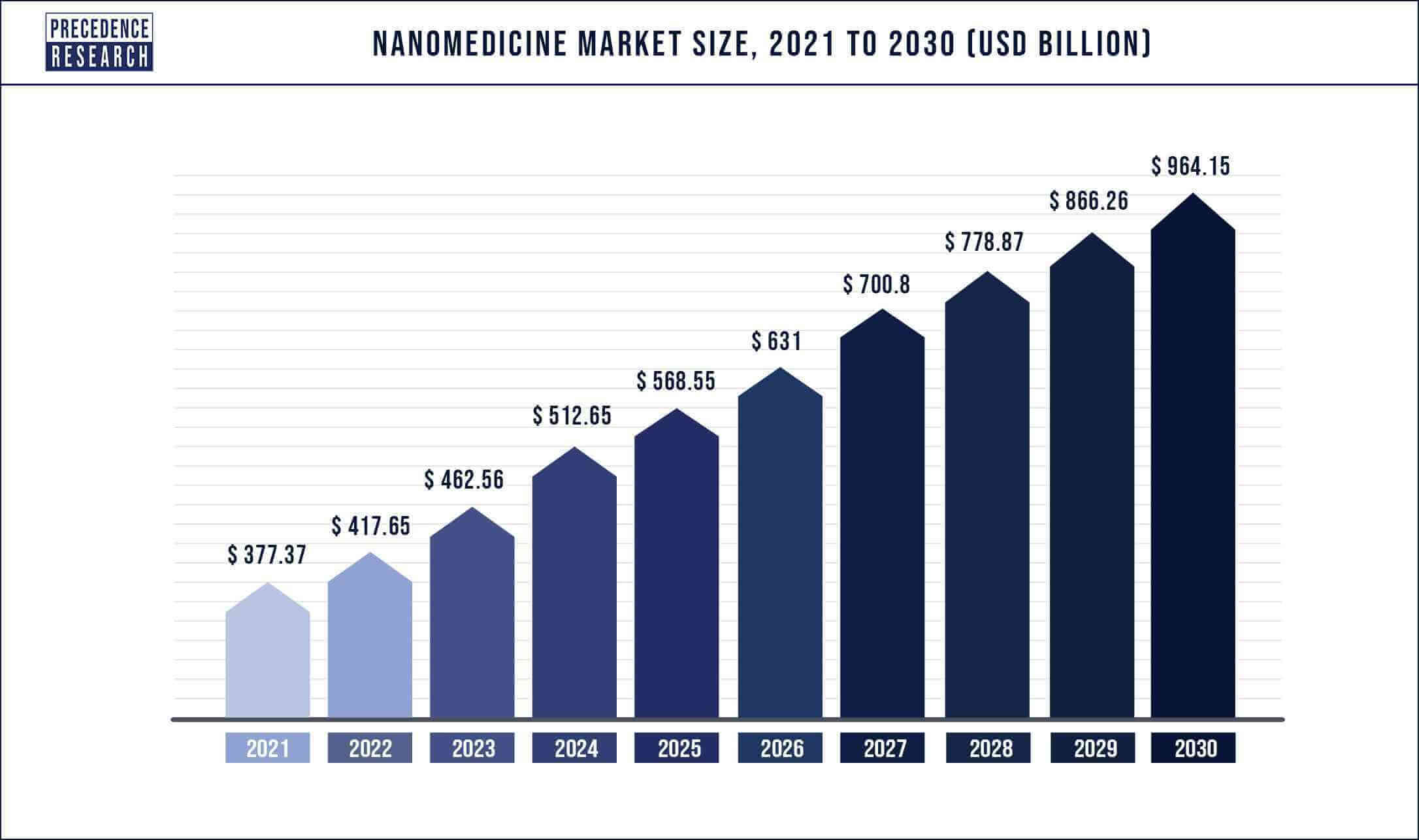
Currently, researchers are trying to use nanotechnology to develop smart pills that can cure cancer. These pills may look like regular pharmaceutical pills, but they can perform many functions like sensing, imaging, and drug delivery. MIT is in the process of developing smart sensor capsules that need not be injected into the abdomen. Instead, when such pills are consumed orally, they reach the target area and monitor critical signs, enabling accurate diagnosis and treatment.
There is also a buzz in the nanotechnology world that scientists have developed xenobots, aka tiny robots that self-replicate. Additionally, there is speculation that these xenobots can heal and regrow damaged nerves. Vaccination is an excellent example of nanotechnology, where nanoparticles in the body stimulate the creation of antibodies to counter infections/viruses.
Medical professionals use nanotechnology to improve ultrasounds and MRI scans and generate clearer images that facilitate accurate diagnosis and treatment.
10. Virtual Reality and Augmented Reality

Augmented reality is another trend that shows signs of taking over the healthcare sector by storm. What is virtual reality? Virtual reality exposes individuals to artificially created (by computers) scenarios and situations. These simulated surroundings and situations mimic practical incidents in real life.
Virtual Reality
Medical students and trainees can use these simulations to educate themselves and apply their skills without treating patients in real life. When they undergo such simulations repeatedly and perform necessary actions, they can implement the knowledge in real-life applications.
Augmented Reality
On the other hand, augmented reality adds (computer-generated) objects and aspects in real-life scenarios. Augmented reality allows medical trainees or professionals to multitask using tools like voice commands and providing guidance like elaborate illustrations and supportive data.
Complicated surgeries consist of many steps. The slightest mistake in a certain step can spell disaster for the other steps, leading to a completely failed operation. AR provides doctors with digital models to methodically conduct an operation, displaying multiple scenarios and outcomes of an action. These inputs help the operation specialists to proceed carefully with complete knowledge, resulting in successful task completion.
11. Cybersecurity Management

The data breach is not new for any industry. However, it is becoming an imminent threat to the healthcare sector. Almost 93% of global healthcare organizations have experienced a data breach in the past three years. Having increased by 162%, unauthorized access is a dangerous problem for hospitals and related organizations.
Healthcare organizations must follow the following steps to prevent data breaches.
- Perform a yearly security risk analysis
- Work with trusted companies and partners
- Educate and update employees regularly
- Monitor devices and records
- Restrict access to patient records
- Analyze current security threats
- Restrict the use of personal devices
- Get rid of outdated IT infrastructure
- Hire quality IT staff
- Review service-level agreements
Follow the tips above and keep abreast of the latest industry updates regarding security.
12. Cognitive Automation

Providing healthcare services in a busy environment can be challenged, especially in times like the Covid-19 where patients outnumbered staff and resources. Cognitive automation will change how the business will function in the next five years.
With CA (cognitive automation), bots can interpret medical claim forms and compare medical notes. With OCR (optical character recognition) and NLP, these bots can even comprehend requests and perform the required tasks. A recent study conducted by McKinsey states that AI-powered personal assistants can automate 50 to 75 percent of tasks, resulting in increased efficiency and reduced costs. Not just monotonous tasks like data entry and form filling, these bots can leverage ML to make informed decisions. Imagine employees performing these tasks manually, it will take them several hours or months.
CA bots can analyze and understand vast volumes of data and provide accurate advice to medical professionals. Overburdened staff in healthcare organizations can greatly benefit from cognitive automation. When these bots accomplish repetitive tasks easily, it leaves employees with more time to attend to patients. Most importantly, cognitive automation is feasible and affordable for even small healthcare organizations.
13. Streamlined Workforce Management

Healthcare organizations have always faced a staff crunch. The problem has been accentuated by the pandemic and the recession. Many healthcare professionals, including physicians, doctors, nurses, and others, quit their jobs in 2021. The reasons for their retirement included exhaustion, long working hours, and workplace harassment. Unfortunately, the labor shortage could lead to $170 billion in incremental costs in 2027. Workforce Management
AI and ML models play a significant role in optimizing workflows to reduce employee fatigue. With more time on their hands, healthcare staff can serve patients better and guide trainees. Additionally, healthcare professionals can also use AI-integrated staffing solutions to find the right job that matches their experience and qualifications.
Integrating AI with current systems can help healthcare organizations manage payroll, scheduling, and attendance obligations. AI collects, monitors, and analyzes data from multiple sources to develop customized HR solutions. Depending on the nature of the task (short-term/long-term assignments and critical cases), the AI solution considers many aspects of understanding how the staff manages patient care.
With the above inputs, AI solutions can create optimized staffing schedules for certain periods. Moreover, the AI solution collects, understands, and analyzes raw and filtered data to provide valuable insights. Integrating ML and AI with existing software will bring in rich dividends.
Want to Build Workspace Management App?
We build custom solutions for wide range of sectors, including healthcare.
Explore How Workspace Management App WorksFinal Thoughts
We have discussed 13 vital Healthcare App Development Trends in 2024. By the end of the year, there may be more that we can add to the list. Technology is constantly evolving, and new trends will continue to emerge. However, healthcare organizations need to understand that just because something is trending does not mean it is right for you.
Adopt a trend or a technology only if it fits your organization’s vision and long-term objectives. AI, ML, cloud computing, augmented reality, big data analytics, and telehealth are some trends that may have a long-lasting impact. Healthcare business owners must find ways to integrate new technology into their organization to enhance the customer journey.
Prepare yourself and make arrangements to invest more in cybersecurity, cloud computing, and employee management. Remote monitoring is a new reality; get used to it. Patients will use patient portals to connect with doctors. Hence, medical staff must be more attentive to these requests. We hope you understand better before you reach a software development company. You can also connect with us if you have any questions or similar projects to develop.
Want to
Build Healthcare AppsHow we help
- Offer dedicated resources
- Build custom apps
- Migrate legacy system



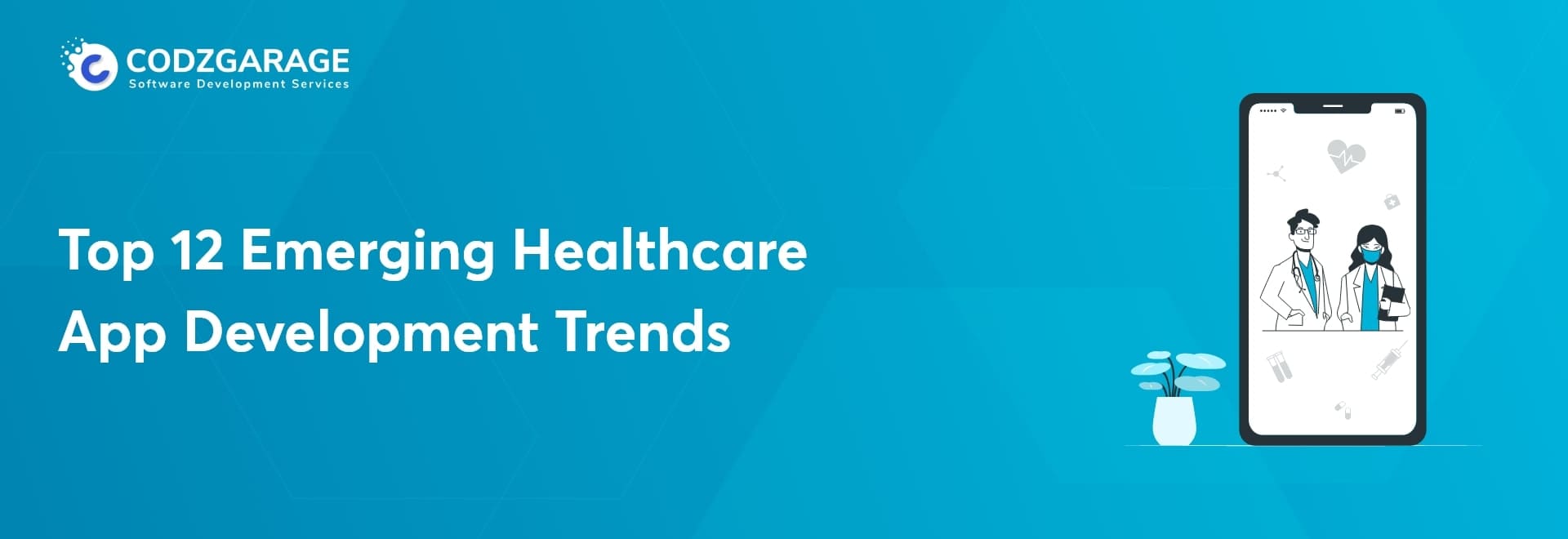

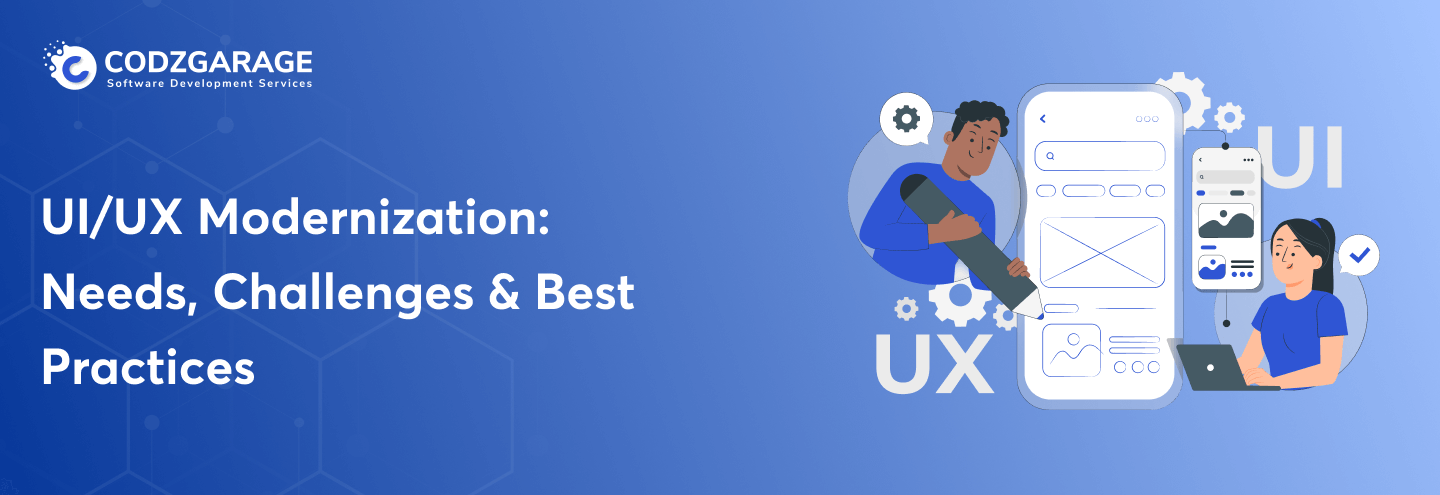
 Kevin Bhut
Kevin Bhut 